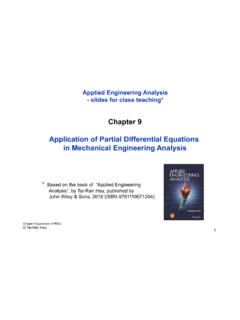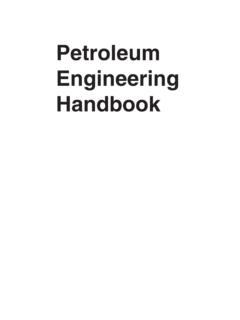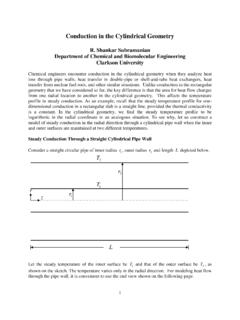Transcription of GLI-2012 All-Age Multi-Ethnic Reference Values for …
1 GLI-2012 Reference Values for spirometry 1. GLI-2012 . All-Age Multi-Ethnic Reference Values for Spirometry Advantages Consequences Philip H. Quanjer Sanja Stanojevic Janet Stocks Tim J. Cole GLI-2012 Reference Values for spirometry 2. Interpretation of spirometric data Philip H. Quanjer Sanja Stanojevic Janet Stocks Tim J. Cole Introduction I. n the four years that it took the Global Lung Function Initiative (GLI) to finish its mission, with the support of six large international respiratory societies, a collabo . rative netwerk was established that spanned the world. The network included clinicians, re . searchers, technicians, IT engineers and manu . facturers. The objective was to derive Reference equations for spirometry that covered as many ethnic groups as possible, and an age range from pre-school children to old age.
2 Thanks to unprecedented international cooperation tens of thousands records of spirometric measure . ments from healthy, non-smoking males and females, were made available by some 70 cen . Fig. 1 - Subdivision of the total lung capacity according to Hutchinson tres and organisations. These data were collated (1846). and analysed with modern statistical techniques, and led to the GLI-2012 prediction equations . This manuscript sum . marises the main results that have been previously present for spirometry in an epidemiological setting [6-7]. Due to ed at international meetings and in print. rapid technological developments, increased insight in the pathophysiology of lung diseases, and a greater arsenal of clinical lung function tests, a revision of the ECCS report Historical perspective was soon called for [8].
3 From then on revised standardisa . tion reports were issued in the United States and Europe;. It took a long time before the introduction of the use of American reports dealt with spirometry only, European the spirometer by Hutchinson in 1846 [1] led to clinical recommendations covered a wider range of lung function applications. Inasmuch as it was clinically applied, meas tests and were invariably combined with recommended sets urements were limited to the assessment of vital capacity of Reference Values [9-11). (VC), the slow expiratory vital capacity (EVC) accord . ing to today's terminology. Figure 1 illustrates the subdivi Reference Values sion of the total lung capacity in EVC and residual volume in Hutchinson's publication.]
4 It took one century before the The sets of Reference Values issued by the ECCS [4-5] were French investigators Tiffeneau and Pinelli [2] transformed based on males working in coal mines and steel works. spirometric measurements to the present form, in which This was not a representative Reference population, and in the forced expiratory volume in 1 second (FEV1) and the practice the predicted Values were deemed to be too high. inspiratory or forced expiratory VC (IVC and FVC) became Even though no women had been tested, the ECCS issued pivotal diagnostic indices in clinical medicine. Yernault Reference Values for females: they were 80% of the Values summarised the history of spirometric measurements con for males.
5 In 1983 the ECCS declined allocating funds for cisely in a clear and accessible publication [3]. a population study to derive Reference Values obtained with methods that complied with the latest standards. With a Spirometric test results are significantly influenced by sub view to combining technical recommendations with appro . ject cooperation, and are affected by technical factors; it fol priate prediction equations , and because no material was lows that measurements need to be administered according available that had been obtained with appropriate tech . to a strict protocol. In 1960 the European Community for niques, for lack of better alternatives the standardisation Coal and Steel (ECCS) was the first organisation to issue committee decided to adopt the technique previously ap.
6 Recommendations [4]. This was followed by an update in plied by Polgar [12] when deriving Reference equations for 1971 [5], which comprised predicted Values for spirometric children. This entailed the generation of a set of predicted indices, residual volume, total lung capacity and functional Values for age, height and sex using published prediction residual capacity. A few years later the first efforts at stand equations , and using this artificially generated set to derive ardisation were made in the United States, initially only new regression equations . Serious objections can be raised GLI-2012 Reference Values for spirometry 3. against this procedure, but the resulting regression equa 2008 was also the year of the groundbreaking publication tions were accepted with scarcely any criticism and subse from Stanojevic et al.
7 [16], applying a new and very power . quently widely adopted. ful statistical technique on collated spirometric data from whites in the 3-80 year age range. An alternative that the ECCS standardisation group would have welcomed as a good alternative to a new population The collaborative work in the group that was named Glob . study was to derive new regression equations from collat al Lung Function Initiative [15] was a privilege thanks to ed good quality measurements, complying with temporal the effective and friendly cooperation, based on mutual recommended standards; such data were not available. The respect and trust, with some 70 groups from all over the first use of collated datasets for deriving predicted Values globe.
8 The analytical work was performed by the Analyti . for children was based on 6 data sets from 5 European cal Team (Fig. 2). countries [13]. This study showed that the resulting ref . erence Values fit 5 of the 6 data sets; it transpired that the sixth set had been affected by a technical problem. Thus Situation in 2006. this approach was validated; it led to recommending the American Thoracic Society (ATS) and European Respira Displaying the predicted FEV1 in white males according to tory Society (ERS) to support this technique with a view to 30 different authors (Fig. 3) reveals a quite worrying pic . deriving Reference Values based on large groups with a wide ture. For the same height and age predicted Values may age range [13].
9 Differ by 1 litre or more. Predicted Values for children and adolescents are quite disjointed from those for adults. These In 2005 the European tradition of combining standardi prediction equations were used in many parts of the world sation reports with sets of recommended predicted Values for diagnostic purposes! A worrisome state of affairs. came to an end: a joint ATS/ERS committee [14] recom . mended predicted Values for the United States and Canada, leaving the rest of the world uncovered. In 2006 one of us Modelling lung function (PHQ) started to remedy the deficiency, aiming to cover as large an age range as possible as well as various ethnic Until very recently regression equations for lung function groups.
10 In 2008 over 30,000 records had been generously were based on simple additive linear regression techniques. made available from all over the world, and a manuscript The by far most popular models had the following form: was being prepared, but this was suspended because an ERS. working group with the same objectives was founded. This Y = a + b height + c age + error (adults). group subsequently acquired ERS Task Force status in log(Y) = a + b log(height) + error (children). 2010, and the support of 6 large international societies [15]. Fig. 2 - The Analytical Team of the Global Lung Function Initiative . From left to right: Prof. Tim Cole, Prof. Janet Stocks, Prof. Philip Quanjer, Dr Sanja Stanojevic. GLI-2012 Reference Values for spirometry 4.






